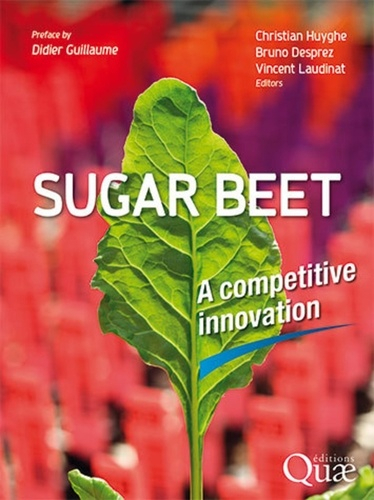Sugar beet - A competitive innovation
Sugar beet has entered the age of liberalism with the abolition of production quotas in Europe. It finds itself on the world market and on an equal footing with sugar cane.France has benefited from the "AKER - Sugar beet 2020, a competitive innovation” Investments for the Future Programme, which aims to double the annual growth rate of the sugar yield per hectare of beet. It [...]
[lire le résumé du livre]
Auteur : Christian HUYGHE , Bruno DESPREZ , Vincent LAUDINAT
Editeur : Quae
Date parution : 09/2020sous 4 à 8 jours
CB Google/Apple Pay, Chèque, Virement
Quel est le sujet du livre "Sugar beet - A competitive innovation"
Sugar beet has entered the age of liberalism with the abolition of production quotas in Europe. It finds itself on the world market and on an equal footing with sugar cane.
France has benefited from the "AKER - Sugar beet 2020, a competitive innovation” Investments for the Future Programme, which aims to double the annual growth rate of the sugar yield per hectare of beet. It has made a scientific breakthrough by researching all of the genetic diversity available worldwide, and by carrying out genotyping before phenotyping. It is developing new genetic material, available for introduction into future sugar beet varieties. It also offers innovative
tools and methods in the fields of genotyping and phenotyping, supporting players in the sector - beet growers and sugar manufacturers - in their imperative improvement in competitiveness.
This book is mainly intended for scientists and professionals, and all those interested in research, development and training in the plant sector. It has just completed eight years of multidisciplinary work bringing together a hundred scientists.
The AKER programme puts for a long time sugar beet in the top tier of cultivated species and helps to provide the consumer with quality sugar produced locally and under environmentally friendly conditions.
Sommaire et contenu du livre "Sugar beet - A competitive innovation"
Preface
Context
A short history of sugar beet breeding
The objectives of the AKER programme
Sugar beet today
What has changed since the launch of AKER
The international sugar economy
Jetta Keranen: Have AKER’s obligations to the ANR been fulfilled?
Genotyping tools and methods
Sequencing and molecular markers
Processing of genomic information
Implementation of the information system
Mitchell Mc Grath: What is the international impact of the AKER programme?
Phenotyping tools and methods
Phenotyping programme
Phenotyping of seeds and seedlings
Phenotyping in vegetation, in the field
Vincent Laudinat: Will the AKER programme meet the expectations of the beet industry?
New genetic material
Double the rate of annual yield growth
General outline of the AKER programme
Evaluation criteria for the 3,000 hybrids
Results achieved
Bruno Desprez: Are the achievements of the AKER programme up to the ambitions of departure?
An open programme
Complementary programmes
Answers to new questions
A dynamic contribution to modern agriculture
A partnership, collaborative, multidisciplinary programme
A transversal programme
A research-education-business continuum
The power of communication
An international dimension
Christian Huyghe: And now, what is the 360° perspectives for the AKER programme?
Glossary
Main scientific publications
AKER partners
AKER collaborators
Photos copyrights

